These Beautiful Annual Flowers Pay Big Dividends in Your Garden
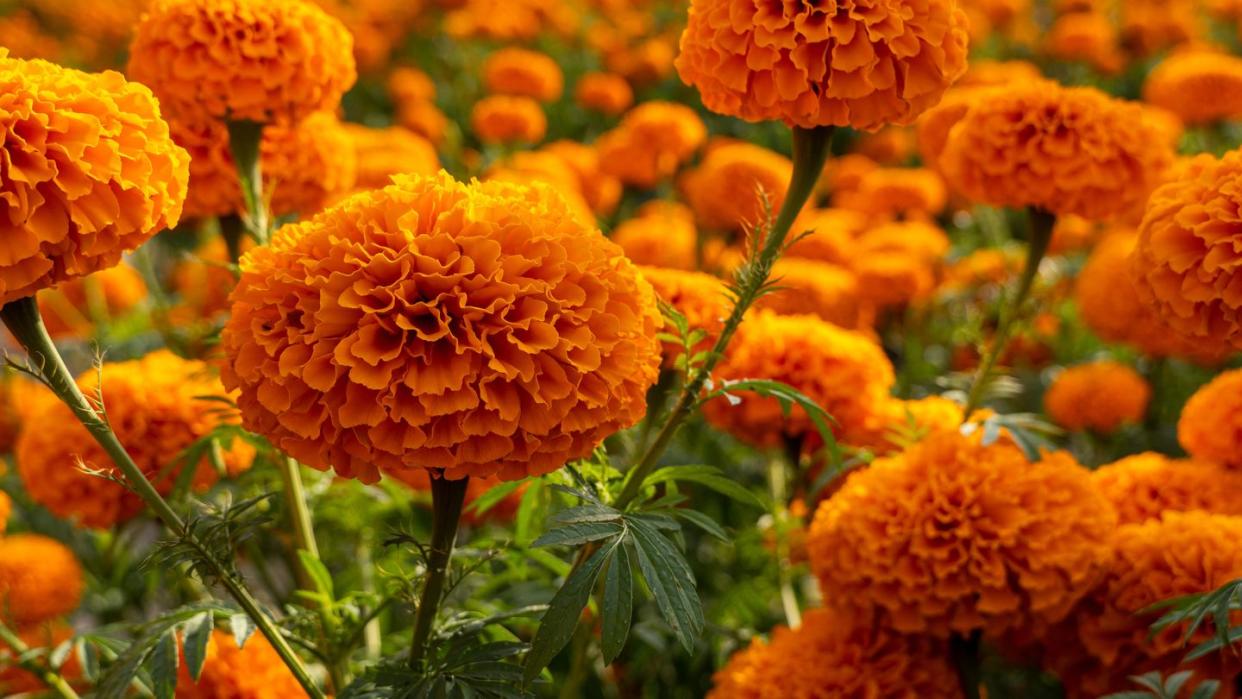
As you're getting ready to start back up on your garden now that the good weather is in full swing, there are a few things to consider before you get your hands dirty: The greenery, the flowers, and the outdoor accessories you want to see in there. Whether your garden is strictly for blossoms, strictly for growing your own food, or a mixture of both, you'll need to determine how much you want to commit to these plants before you can decide on which seeds and soil to purchase. If you're slightly commitment phobic, but want to ensure some color in your plot of land this season, we recommend looking into annual flowers.
If this is the point where you realize you often get confused about what exactly is an annual versus a perennial, fear not. We're here to help. Gardening can be a relaxing hobby, but if you're unsure how or where to start, it's also quite overwhelming at times. Below, with the help of a few gardening experts, we break down what an annual plant is, and why we love them, then spotlight some of our favorites that we look forward to seeing (hopefully) every year.
For more inspiring gardening stories:
What Is An Annual Plant or Flower?
To put it as plainly as possible, an annual is a plant that only lives for one season, while perennials come back again and again. "An annual plant will complete a life cycle—germinate, grow, bloom and set seed—in one growing season. A perennial is a cold hardy plant that blooms usually for a short period of time in a season but will come back the next season," Leslie Hunter, the horticulture manager at the Greater Des Moines Botanical Garden, tells House Beautiful.
This definition loosely changes depending on your region and on the plant, gardening coach Jessica Zander of You Can Do It Gardening points out, as a flower may be a perennial in a climate that's warm year-round but would be closer to an annual in an area with all four seasons because it might not be able to withstand the cold.
Why You Should Plant Annuals
Though you may wonder why someone would spend the time planting a flower that's only going to be around one season, when they instead could plant a perennial, there are many reasons why you should give annuals a chance. We looked to Christopher Griffin, a.k.a. the Plant Kween, as well as Hunter and Zander, to spell it all out for us.
Annuals produce extremely vibrant blooms. "Because of their short existence, their main goal is to produce flowers so they can make seeds. This means annuals provide constant flowering through the growing season and those pops of color in your garden," Hunter says. In other words, they're shooting stars that burn out fast but bring a lot of drama.
Annuals are less expensive than perennials. These plants grow directly from seeds, so they take less time and money to grow in production, Hunter adds.
Annuals provide flexibility. Plant Kween puts it this way: "Since annuals don't return the next year, gardeners can experiment with different varieties, colors, and arrangements annually, allowing for creative freedom and variety in garden design." We'll always support a creative moment.
Annuals can be used as fill-ins. As perennials establish themselves, you can use annuals as blossoming filler so your garden still looks colorful and pretty.
Annuals serve as seasonal decor. "Annuals can be selected to complement the seasonal theme of a garden, offering blooms that align with specific times of the year," Plant Kween says.
Annuals make a quick impact. Because their lifecycle is so relatively short, annuals can offer almost immediate gratification to gardeners once they bloom. Whether you're new to gardening or experienced in it, we can all use a confidence boost every once in a while.
Sunflower
Arguably one of the boldest annuals on this list, the sunflower is a resilient plant that is sure to catch the eye. It's heliotropic, meaning the flowers move to face the sun throughout the day, and it's a great way to attract pollinators. Plus, you can eat the seeds for a healthy snack.
Light: Direct sunlight
Hardiness zone: 4 to 7
Soil: Well-draining
Blooming season: Summer into fall
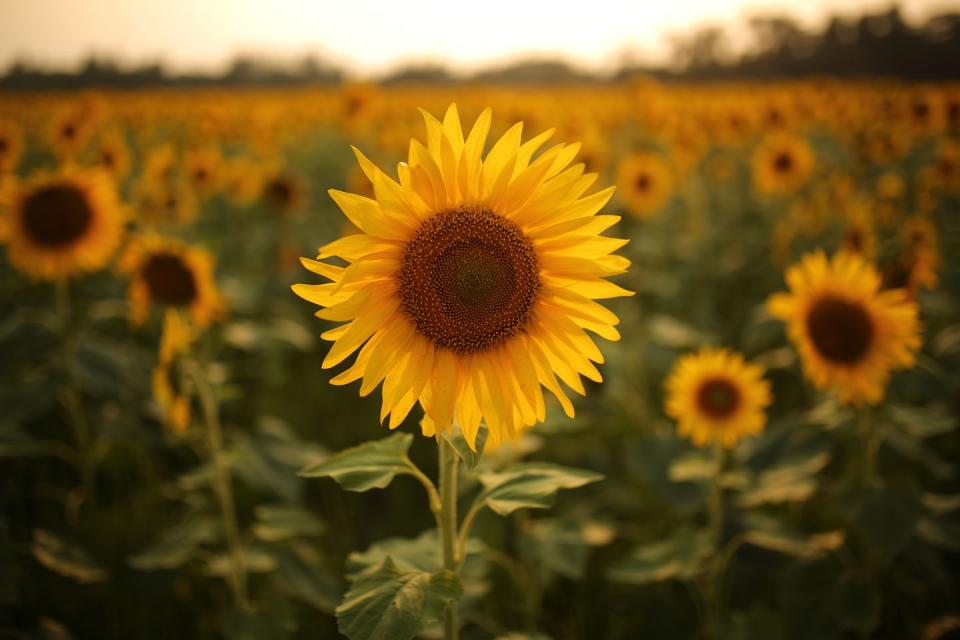
Impatiens
Impatiens are low-maintenance, shade-loving flowers that are perennials in frost-free areas and annuals everywhere else. They look amazing both in hanging baskets and in garden beds, and they come in a variety of colors. With a delicate fragrance wafting from their blooms and dark green foliage, impatiens are popular options in bringing vibrancy to any shady space.
Light: Filtered sunlight
Hardiness zone: 10 to 11 as a perennial, any other as an annual
Soil: Humus-rich, moist, well-draining
Blooming season: Late spring until first frost
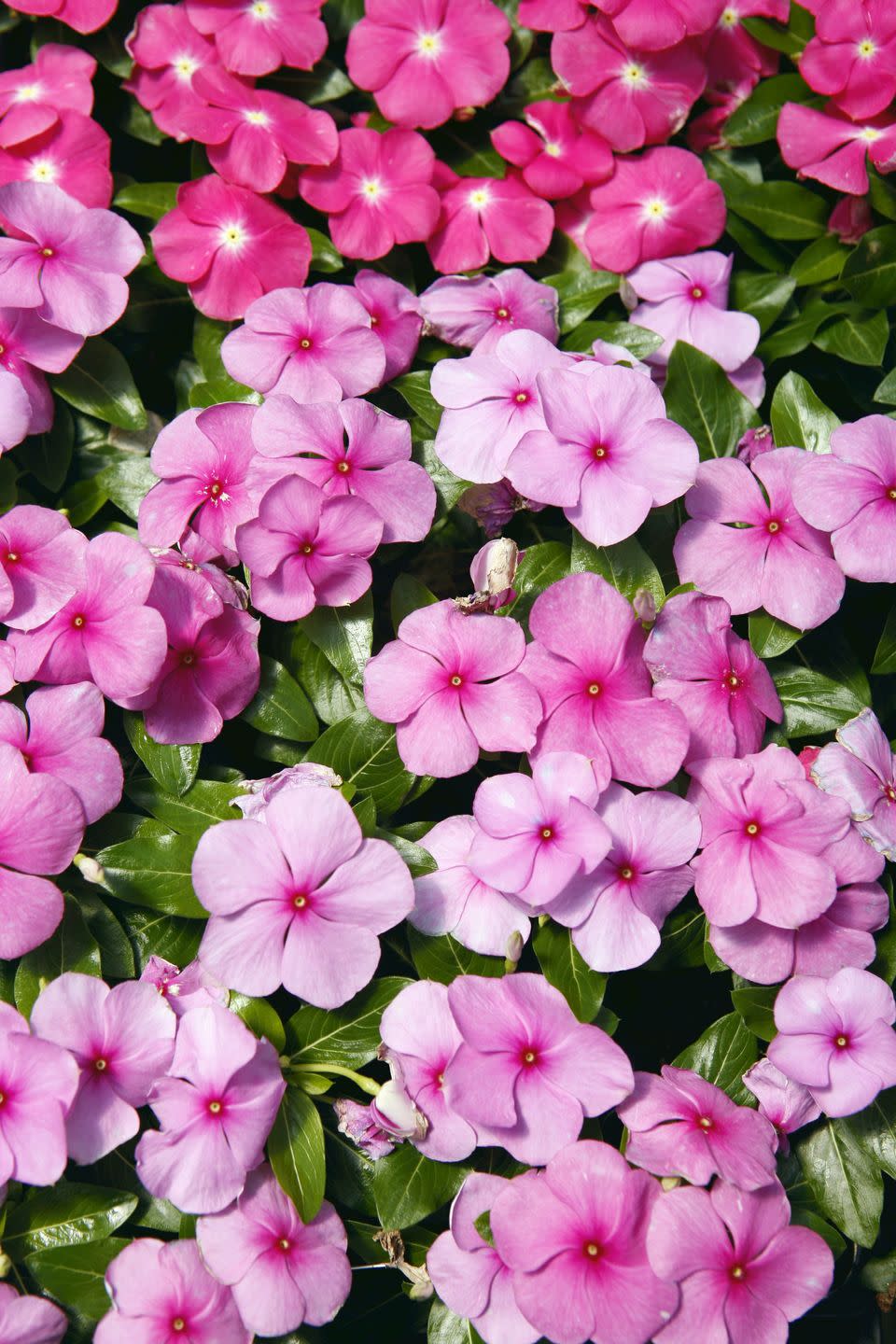
Lantana
You might be thinking, "Isn't lantana a perennial?" Well, as we mentioned above, some perennials are grown and classified as annuals depending on the region, and lantana is one in cooler climates. "Lantana produces clusters of colorful flowers that attract butterflies and hummingbirds, making it ideal for adding cheerful blooms to sunny borders, containers, or as ground cover in hot, dry areas," Plant Kween says.
Light: Direct sunlight
Hardiness zone: 8 to 11
Soil: Well-draining
Blooming season: Late spring into fall
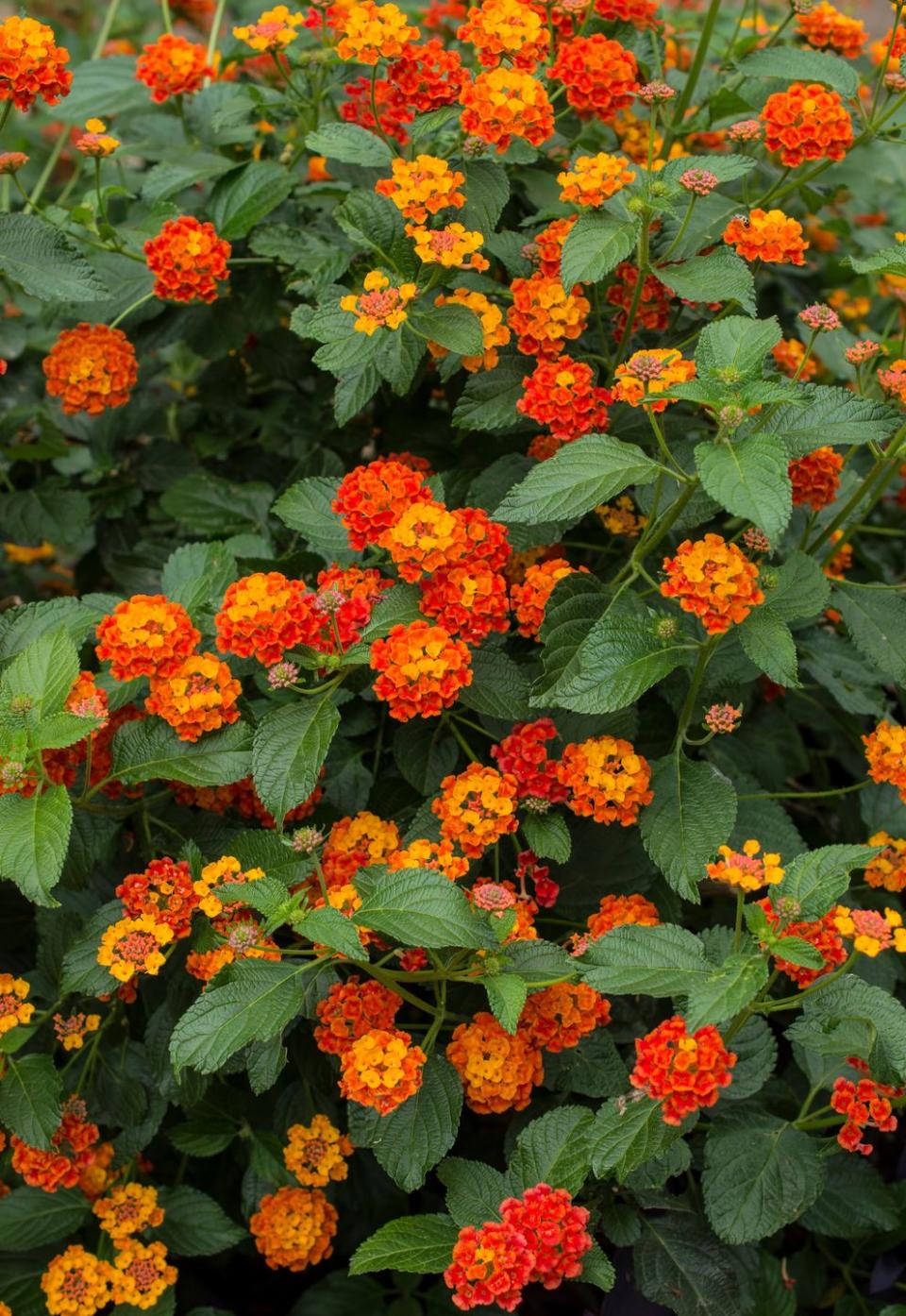
Celosia
Celosias, also known as cockscomb, are annuals with blooms that "can range from spikes (like wheat) to crested wavy crowns in bright colors of pink, orange and yellow," Hunter explains. It is a relatively easy-to-grow flower and is extremely eye-catching in your garden or along your driveway thanks to its bold blooms and contrasting foliage.
Light: Direct sunlight
Hardiness zone: 2 to 11
Soil: Well-draining
Blooming season: June until first frost
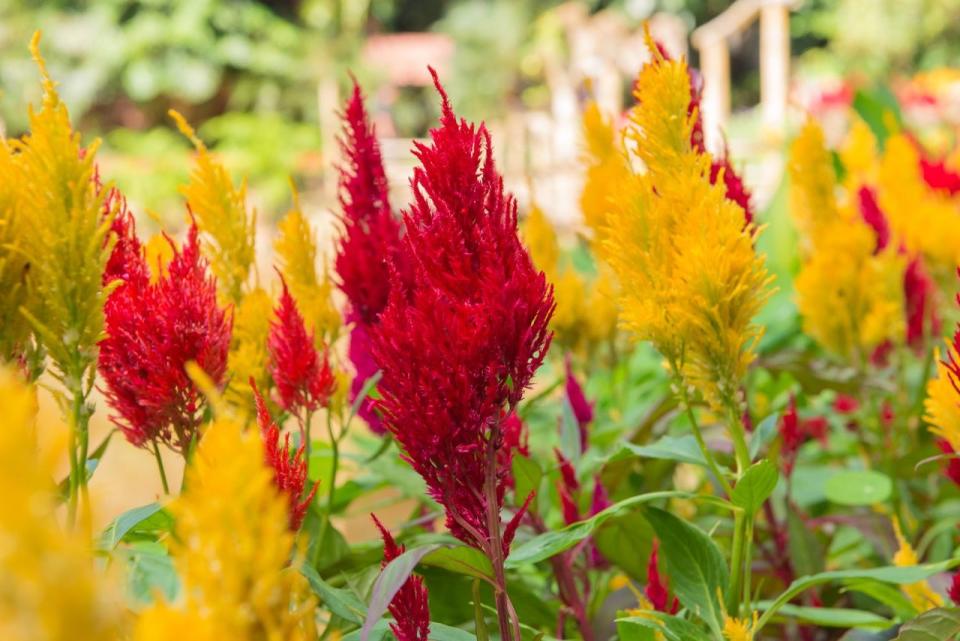
Hibiscus
Hibiscus is another one of those tricky flowers that's a perennial in some places and an annual in others. There are two types: hardy hibiscus and tropical hibiscus. It's the tropical kind that is considered an annual if they're planted somewhere that has a winter and they aren't properly prepared for it. "Hibiscus adds a tropical flair to gardens, patios, or poolside landscapes, with its exotic blooms attracting hummingbirds and butterflies," Plant Kween says.
Light: Direct sunlight
Hardiness zone: 4 to 9
Soil: Well-draining
Blooming season: Mid-to-late summer into fall
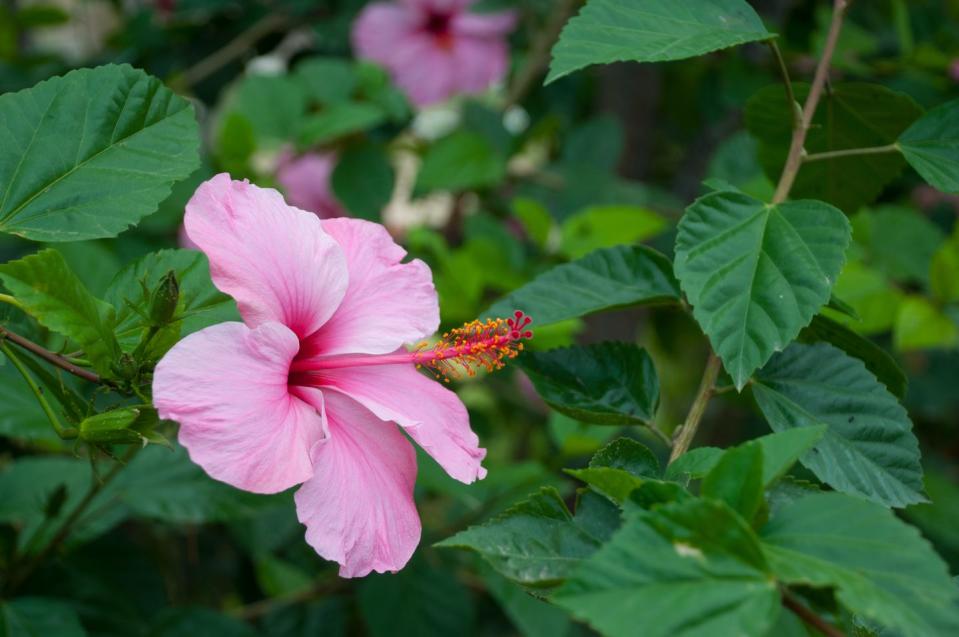
Tuberous Begonia
These annuals produce large, showy blooms that are sure to make any garden a showstopper. Tuberous begonias are fragrant and have glossy foliage, and they thrive in shady areas. Plant Kween suggests using these camellia-like plants to brighten up that shady section in your flower bed or bring vibrancy to your covered porch with hanging baskets.
Light: Filtered light and shaded for half the day
Hardiness zone: 2 to 10
Soil: Moist, well-draining
Blooming season: Summer to frost
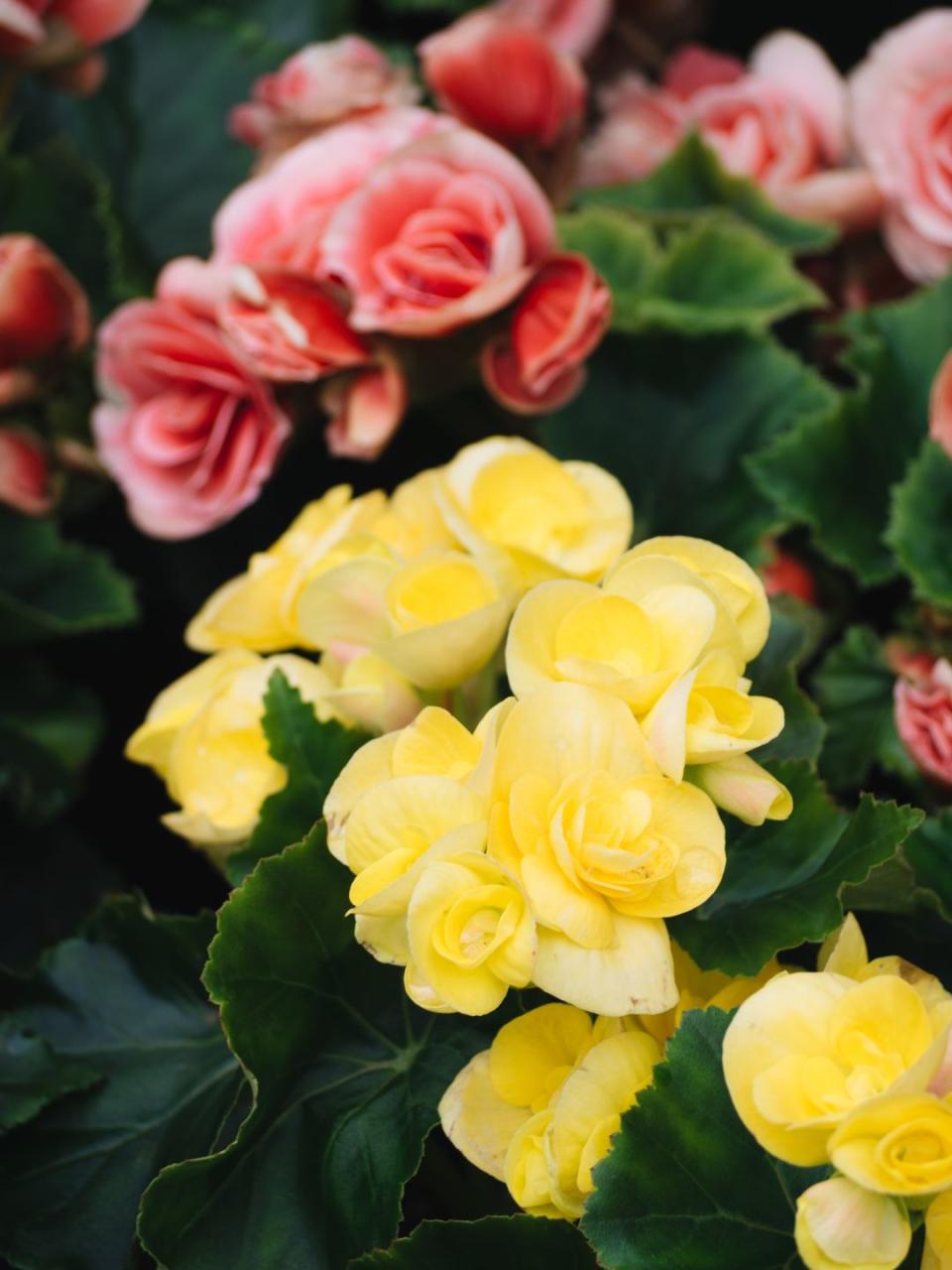
Vinca
Vinca flowers are often called periwinkles, but common periwinkles are true perennials. Vinca, on the other hand, are annual plants that don't require a lot of maintenance and are often called Madagascar periwinkles. They're very similar in look to impatiens but they love the sun, and vincas attract butterflies and repel pests.
Light: Direct sunlight
Hardiness zone: 7 to 9
Soil: Well-draining, sandy loam
Blooming season: Late spring to first frost
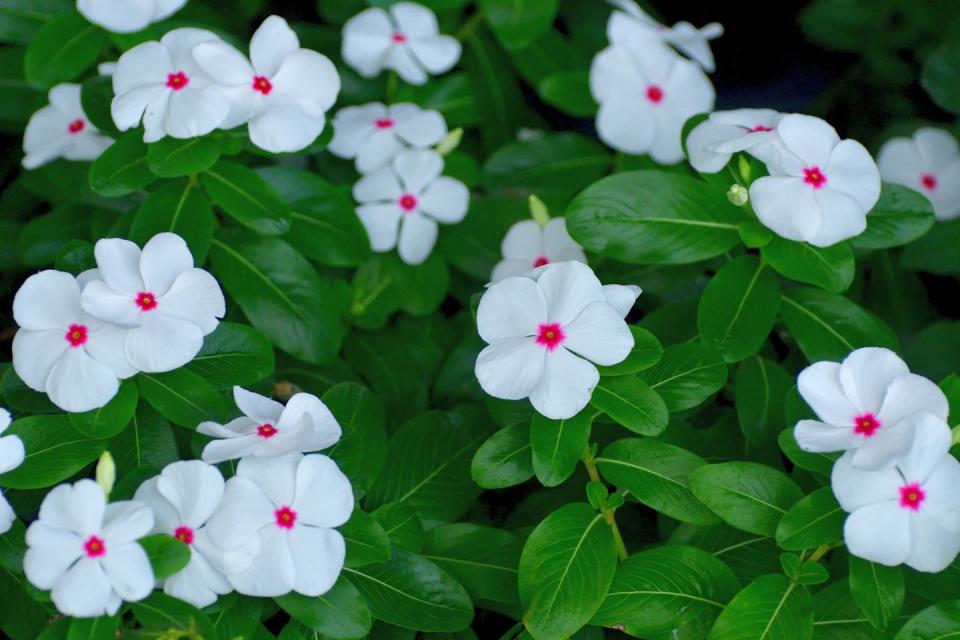
Verbena
Verbenas come in a variety of bright colors with their little, star-shaped blooms. These flowers stand upright and are long-blooming, as they're fairly tolerant to the heat. There are around 150 species of verbena flowers, and some are true annuals while others are perennials. Generally, they're all pretty low-maintenance.
Light: Direct sunlight
Hardiness zone: 7 to 11
Soil: Rich and well-draining
Blooming season: Late spring to early fall
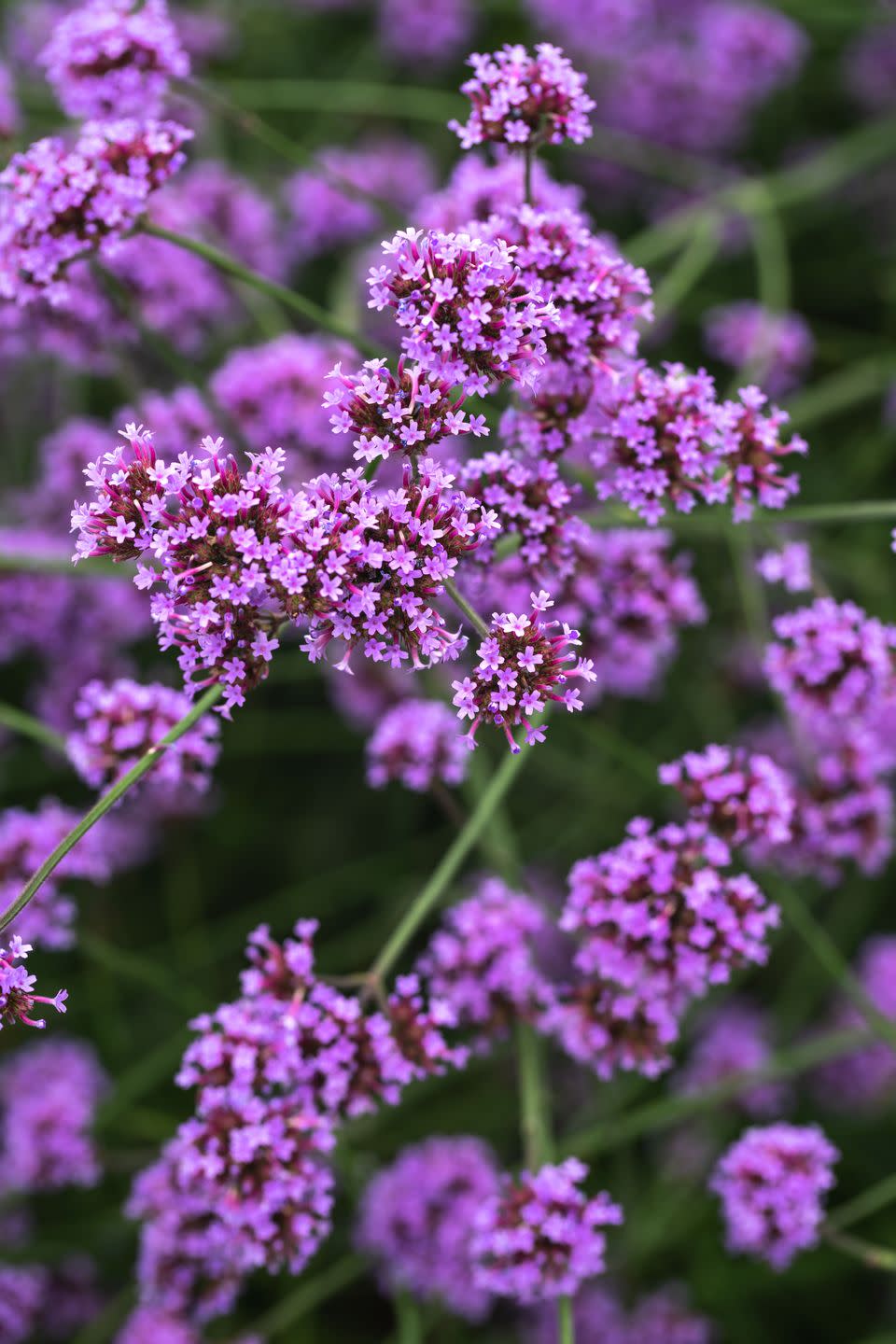
Narrowleaf Angelon
An annual in colder climates, narrowleaf angelons is native to Mexico and the West Indies, making it a drought-resistant, sun-loving flower. Its blooms are delicate and butterfly-like with airy foliage, and it doesn't require much maintenance once it's established, according to Plant Kween.
Light: Direct sunlight
Hardiness zone: 9 to 11 as a perennial, any other as an annual
Soil: Rich, well-draining
Blooming season: Late spring to fall
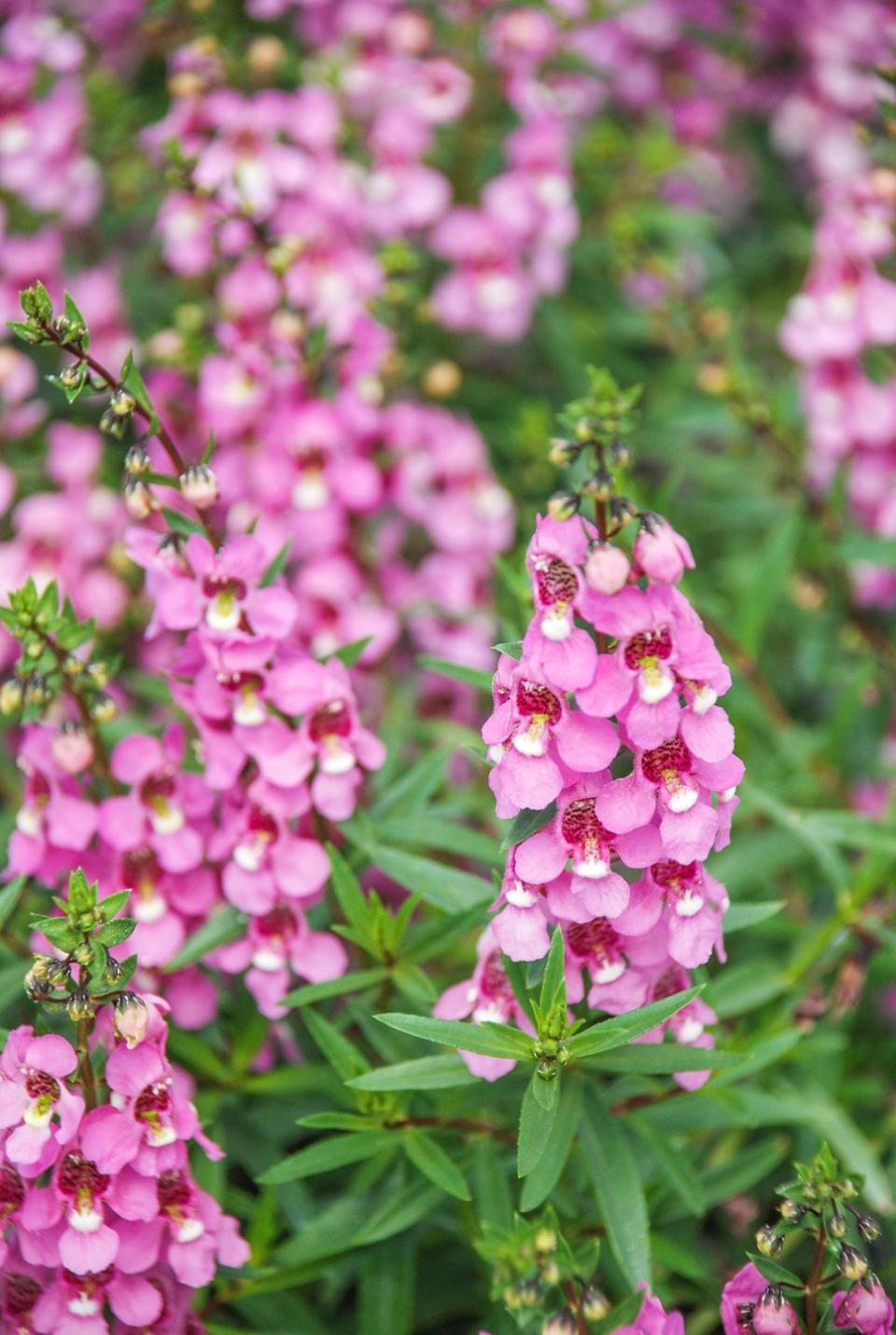
Annual Dianthus
Annual dianthus flowers are very similar to carnations in the way their blooms look, but these annuals grow in compact mounds with slightly fragrant collections of blossoms sprouting on top. They grow in a variety of colors and work wonderfully as bedding plants.
Light: Direct sunlight
Hardiness zone: 4 to 8
Soil: Sandy and well-draining
Blooming season: Spring to fall
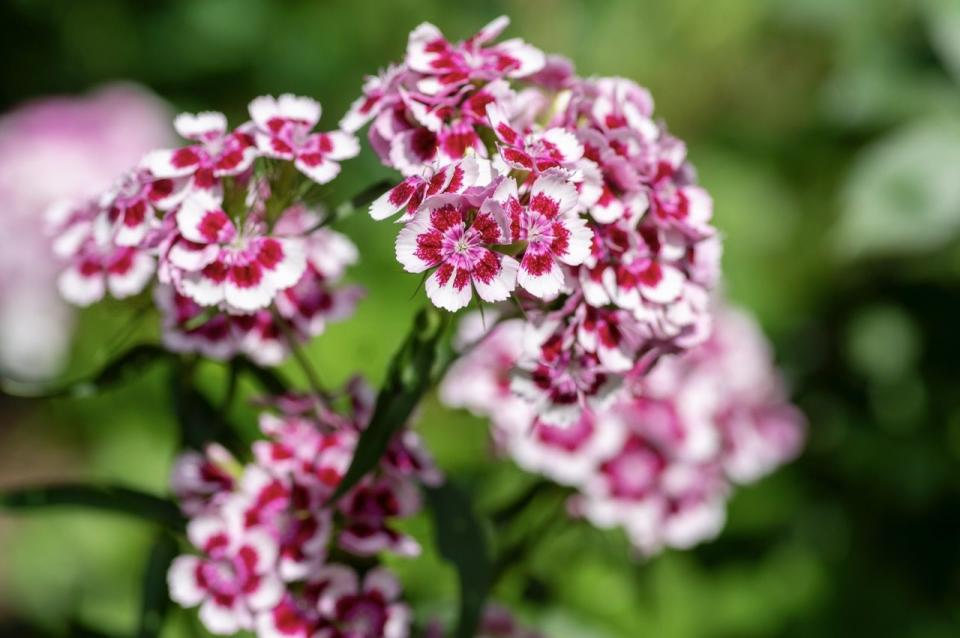
Calibrachoa
Calibrachoa flowers, also called million bells, are extremely popular for outdoor growing in containers—they're amazing for beautifying your front porch. They come in a variety of colors and can be perennials in warm climates though they're still considered tender. Calibrachoas don't need to be deadheaded, but cleaning up the plant in late summer will help the blooms last longer.
Light: Direct sunlight
Hardiness zone: 9 to 11 as a perennial, any other as an annual
Soil: Acidic and well-draining
Blooming season: Spring to first frost

Petunia
Petunias come in a variety of colors, shapes, and sizes. These annuals are very popular for hanging baskets or containers on porches, as they provide a cascade of color with their lush blooms. They're extremely lively and do occasionally require deadheading (removing of older flowers from the plant), but Hunter points out that some newer varieties deadhead themselves.
Light: Direct sunlight
Hardiness zone: 9 to 11 as a perennial, any other as an annual
Soil: Light and sandy
Blooming season: Spring until frost
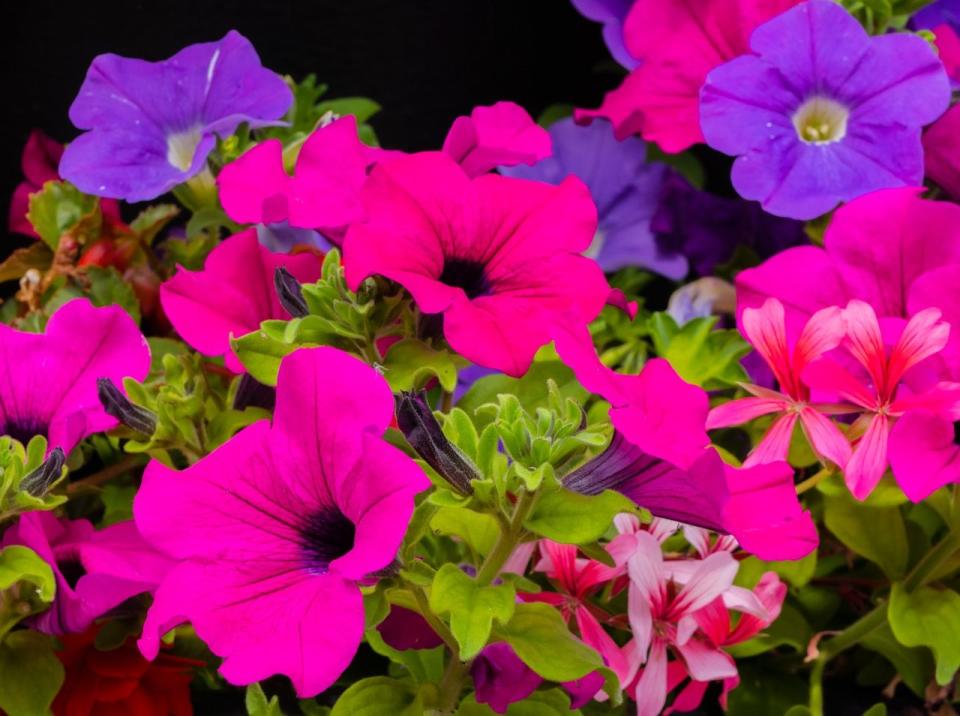
Angelonia
Angelonias are grown as annuals in colder climates as they love the sun and can't withstand frost. Their blooms look like a combination of orchids and snapdragons and they produce a fruity scent that's perfect for the summertime.
Light: Direct sunlight
Hardiness zone: 9 to 11 as a perennial, any other as an annual
Soil: Moist, well-draining
Blooming season: Late spring into fall
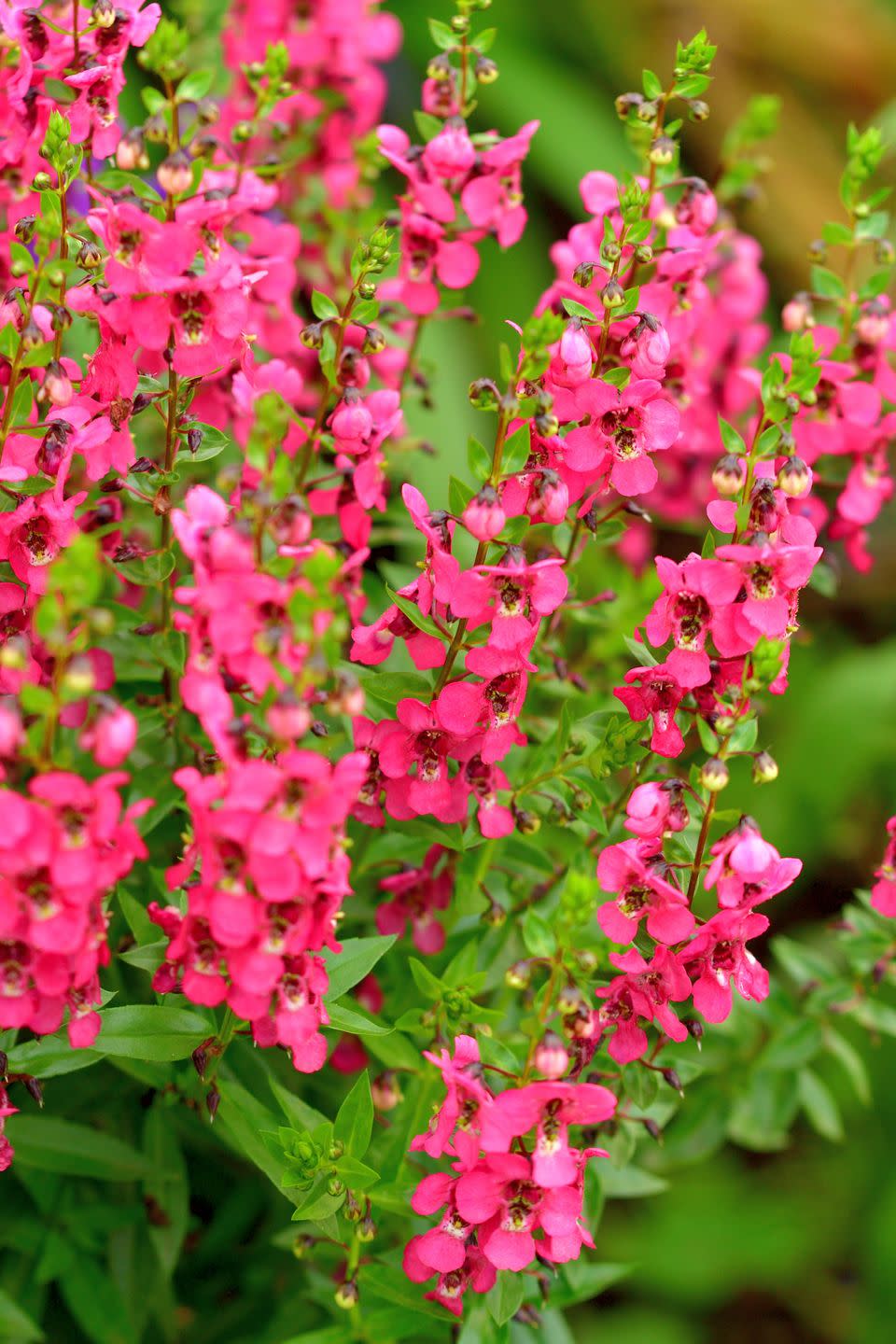
Alyssum
Alyssum blooms are delicate, elegant, and expansive. This annual attracts pollinators and does well in garden beds, along garden borders, or in containers on your porch. They cover a lot of ground and smell of sweet, warm honey.
Light: Direct sunlight
Hardiness zone: 5 to 9 as an annual, 9 to 11 as a perennial
Soil: Moist and well-draining
Blooming season: Late spring until first frost
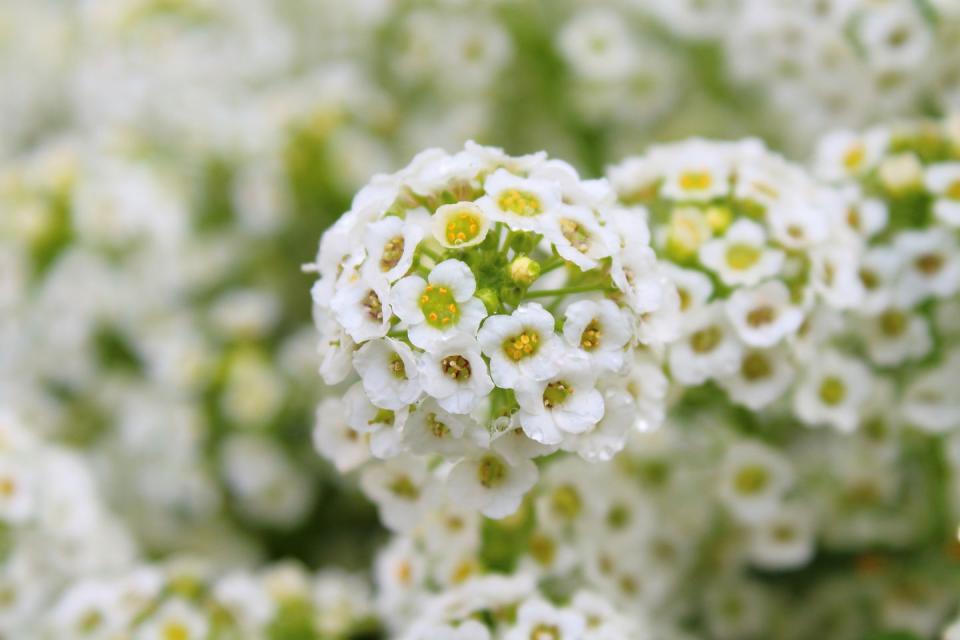
Zinnia
"Zinnias are easy-to-grow annuals that come in a variety of vibrant colors and sizes," Plant Kween says. They're an ideal flower for gardens beds because of how agreeable they can be and their bursts of color. They also attract butterflies and other pollinators with their abundant blooms.
Light: Direct sunlight
Hardiness zone: 2 to 11
Soil: Fertile, well-draining
Blooming season: Summer into fall
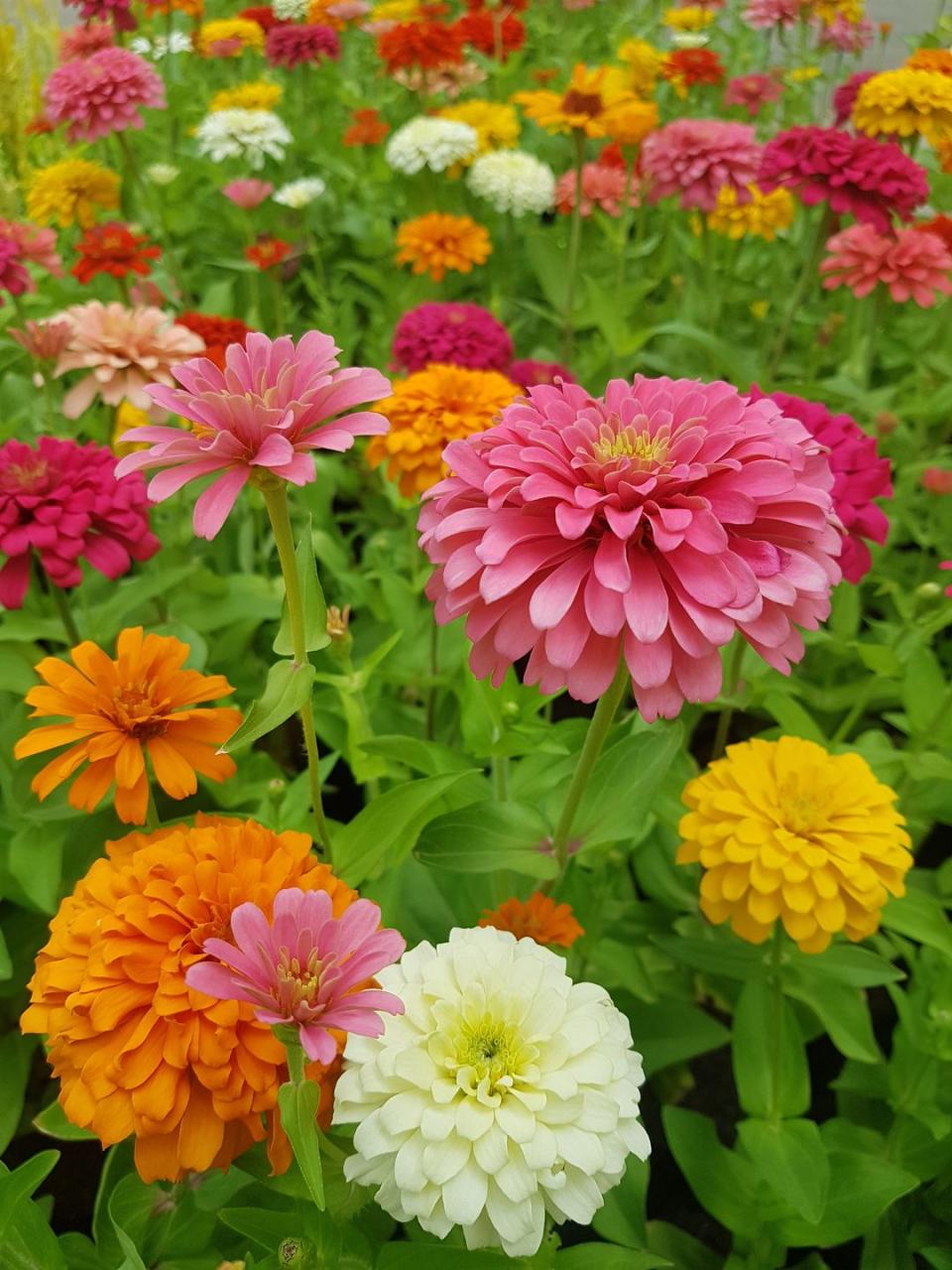
Garden Cosmo
Garden cosmos are some of the easiest annuals to grow simply by sprinkling seeds into your garden after the last frost. Their blooms look similar to daisies and their foliage could easily be described as feathery. These annuals are fairly tolerant of heat and drought once they're established, and Plant Kween points out that they "add a whimsical charm to garden beds, borders, or wildflower meadows, attracting butterflies and bees with their abundant blooms and providing a cottage garden feel to any landscape."
Light: Direct sunlight
Hardiness zone: 2 to 11
Soil: Dry and arid
Blooming season: Early-to-mid summer until the first frost
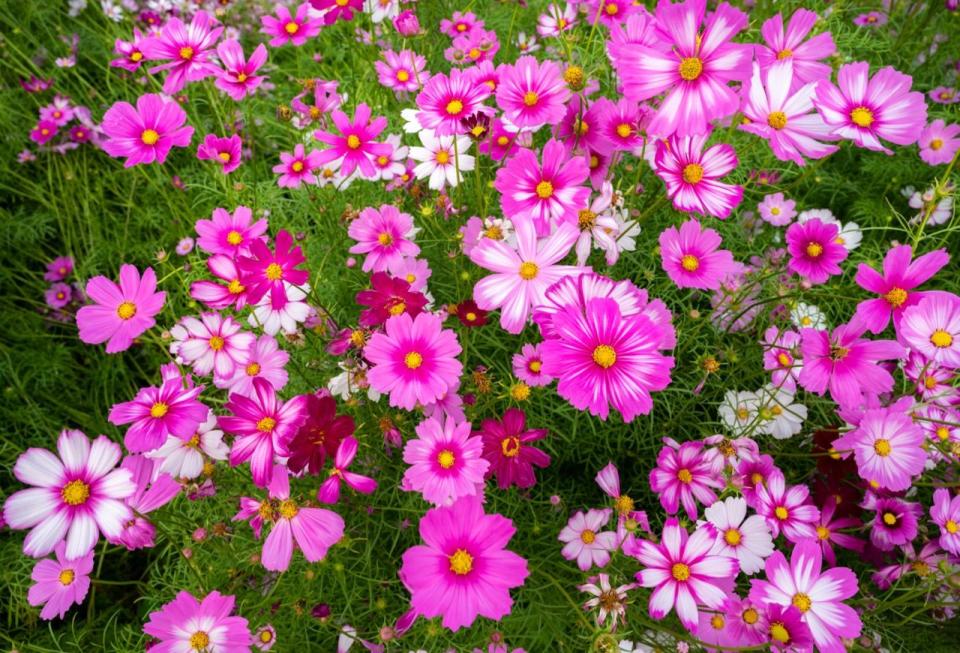
Marigold
If you're a gardening novice, look to marigolds to get started. They're an easy-to-grow annual and bloom very quickly, making them perfect for those who love instant gratification. Their odor is not pleasing to pests, so you likely won't have as many issues with deer or rabbits with marigolds in your garden. Plus, their striking blooms are extremely attractive in any flower bed.
Light: Direct sunlight
Hardiness zone: 2 to 11
Soil: Loamy and well-draining
Blooming season: Early summer into late fall
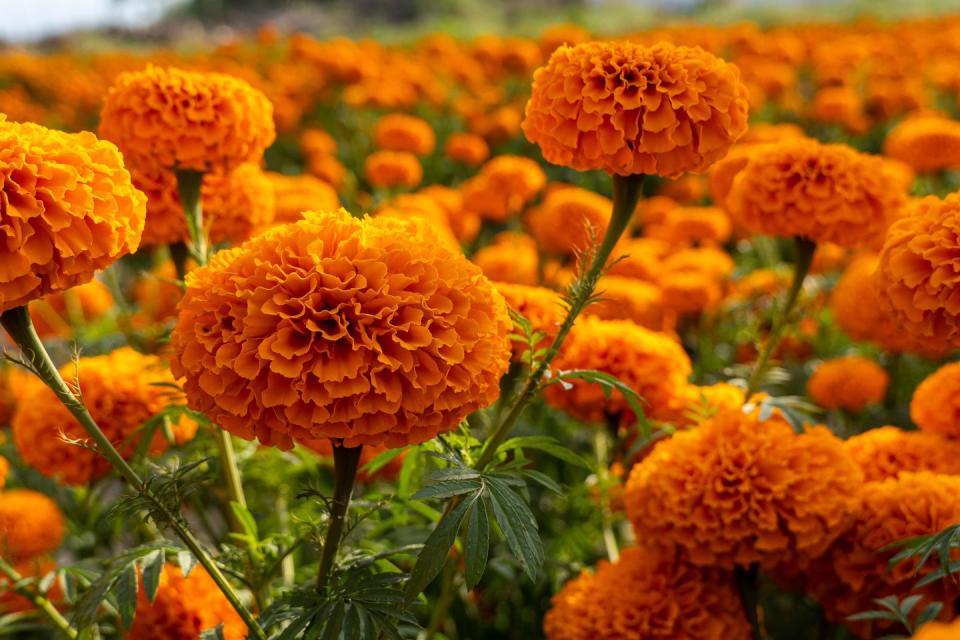
Paris Daisy
Paris daisies, also known as marguerite daisies, are tender perennials that are often grown as annuals due to their inability to handle frost. They're the classic depiction of any daisy bloom you see with their delicate, white petals and bright yellow centers. Paris daisies have long blooming seasons, making them smart additions to any fall gardens.
Light: Direct sunlight
Hardiness zone: 9 to 11 as a perennial, any other as an annual
Soil: Fertile and well-draining
Blooming season: Spring into fall
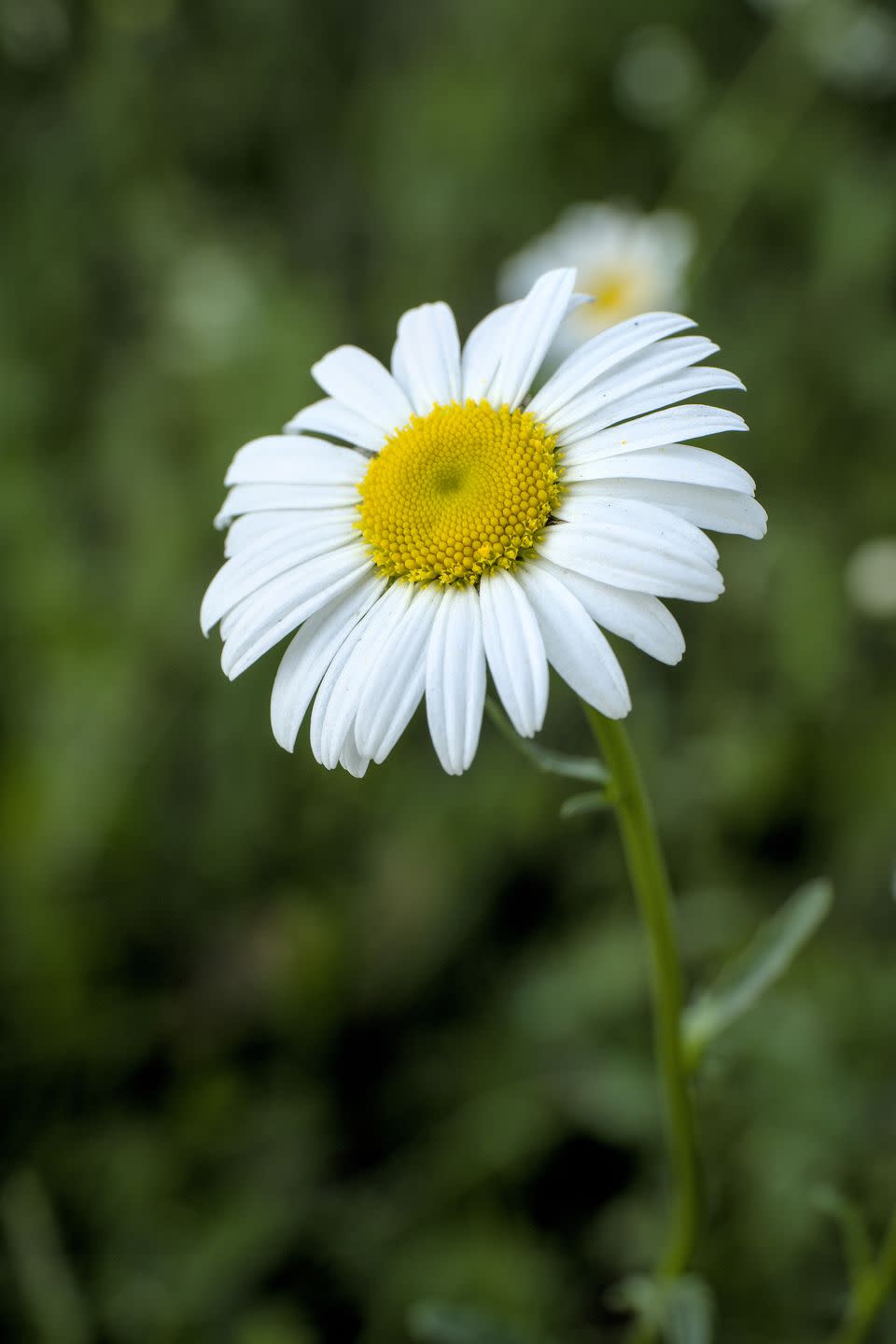
Globe Amaranth
Hunter describes these ball-like annuals well, saying, "They almost look like something from a Dr. Seuss story." Globe amaranths are heat-tolerant and are beloved because they keep their color after drying out. Their long-lasting blooms attract pollinators and provide visual interest to any garden or dried flower bundles.
Light: Direct sunlight
Hardiness zone: 2 to 11
Soil: Moist and well-draining
Blooming season: Early summer to first frost
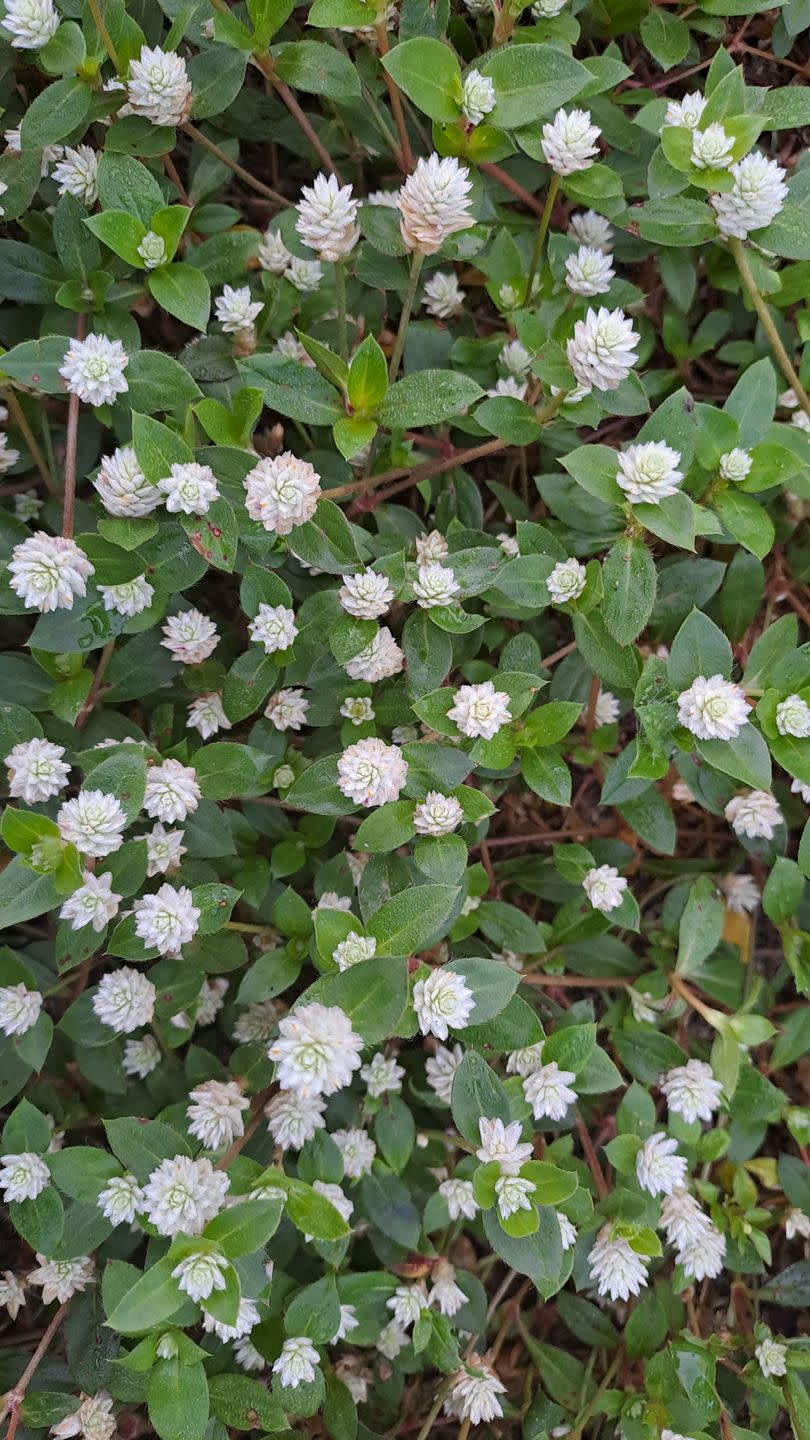
Mandevilla
Mandevilla flowers are tropical plants that grow on both climbing vines and in bush-form. Because they're from a tropical region, mandevillas are actually perennials in warmer climates but annuals in places where it frosts. They look amazing when spilling over containers on a front porch, and they attract hummingbirds and bees.
Light: Direct sunlight
Hardiness zone: 9 to 11 as a perennial, any other as an annual
Soil: Sandy and well-draining
Blooming season: Late spring to first frost
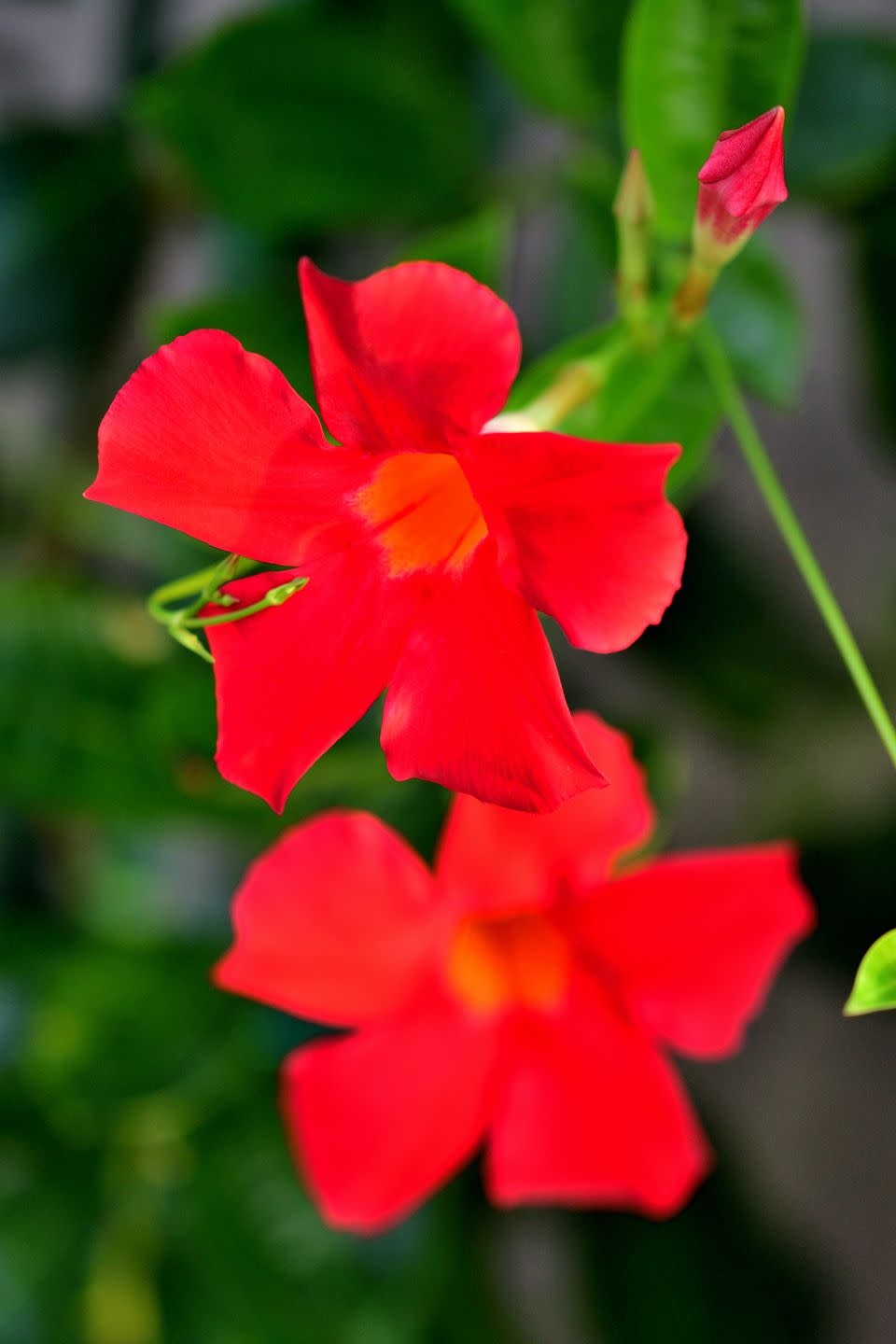
You Might Also Like


